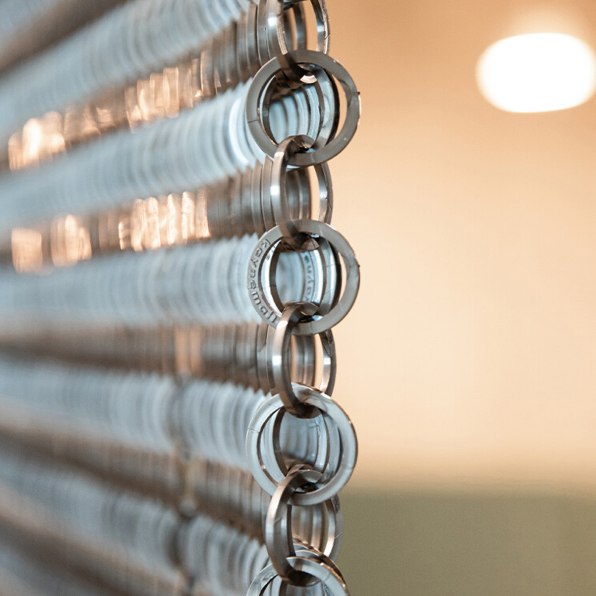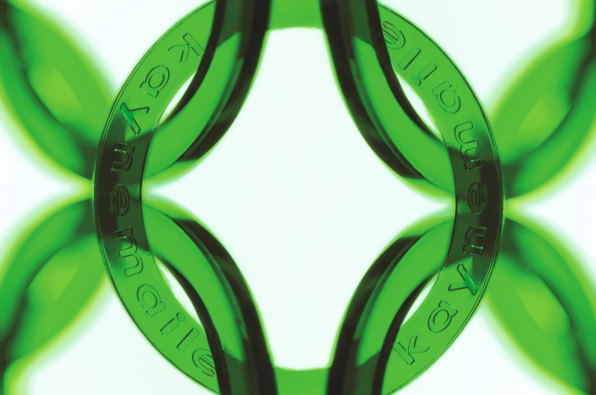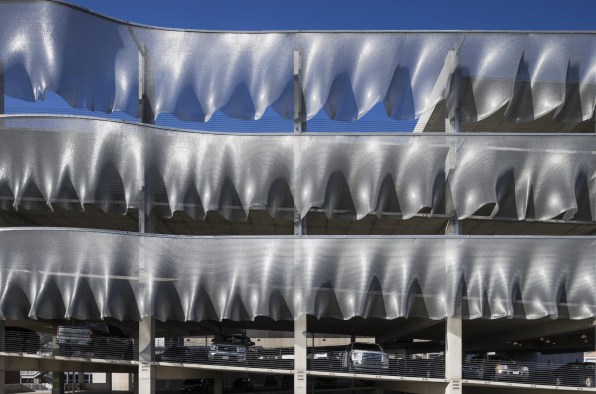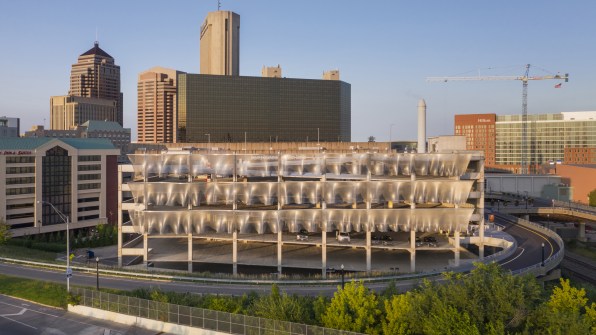Inspired by ancient chainmail, the building facade treatment comes with some surprising benefits.
Kayne Horsham knew he was onto something when the costumes he was making got a nickname. It was at the turn of the millennium and Horsham was working in his native New Zealand on the production of what would become the blockbuster three-film adaptation of The Lord of the Rings. As artistic director for the creatures, armor, and weapons department, Horsham was tasked with finding ways to outfit the films’ plethora of hobbits, wizards, elves, and dwarves. In practice, that mean creating a lot of chain-mail armor.
Chain mail, a sheath of finely interlinked metal rings, dates back more than 2,000 years to the knights and warriors of ancient Europe. For the films, which are set in a fictional world where a group embarks on a dangerous quest, chain-mail armor was a major element of the costumery. “It was, ‘here’s a sketch, here’s the characters, here’s the budget, here’s the date, figure out how we get there with the physical side of it,’” Horsham says.

Horsham developed a version of chain mail made not of heavy metal but of light and airy polypropolene plastic. It looked the part without weighing down the actors wearing it, but took an estimated 1,000 hours per shirt to produce by hand. The actors were so impressed by Horsham’s ingenuity and craftsmanship, they nicknamed the armor Kaynemaile, after its maker.

Horsham saw the potential to turn that ingenuity into a business. He figured that the one-off costumes he had helped make for the movies could just as easily be scaled up to serve as unique fabrics for high-end couture. He started talking with big players in the fashion industry, including Gucci, and got an order for 100,000 square feet of the stuff—an amount massively bigger than what was produced for the film. Horsham realized that if he was going to make this work, he’d need to make an investment to automate production. He also realized that the fickle fashion industry might not want his bespoke chain-mail material forever, and that there might be more sustainable customers in other industries.

And so he turned to the unassuming world of building facades. Now, more than two decades after first handcrafting his novel chain mail on the sets of the Lord of the Rings films, Horsham has industrialized the material for use on buildings around the world. His company—named, yes, Kaynemaile—has turned movie costume armor into an elegant, flowing, and surprisingly sustainable mesh material that’s being used by designers to augment their buildings, both outside and in.
“I understood the design process and the fact that architects are sitting in a unique position where they’re looking to the future and wanting to understand the technologies that can help take them there,” Horsham says.

Kaynemaile acts as a fluid, curtain-like element on buildings ranging from parking structures to museums to private residences, providing a kinetic surface that moves in the wind and draws the eye. Manufactured though injection molding, the rings within the chain mail have no joints, and are strong, lightweight, and resistant to fire and ultraviolet light. And as Horsham found out by accident, the material is also unexpectedly effective at keeping the buildings it shrouds cool. Kaynemaile was being installed on a parking garage in Australia on a punishingly hot day, and Horhsam says his team started to notice when pieces of the material went up, the surrounding area felt cooler. “We started taking readings off the concrete and seeing a significant drop off in temperature,” he says.

Further research was conducted and Kaynemaile found that the interlinked rings create a structure that effectively blocks 70% of the sun while allowing 80% of the air to flow through the sheath. “We’re like a louver system where air passes through three-dimensional density but light doesn’t, so we can reduce the solar energy gain but allow almost 100% air movement to flow around the building,” he says. “Here we are promoting it as a facade material, but there’s more.”

It’s an increasingly attractive material to architects and builders hoping to increase the comfort of their spaces through passive technologies. Sam Rosenthal is an architect at Schooley Caldwell, an architecture firm based in Columbus, Ohio, and he led the design of a parking garage project there that utilized Kaynemaile as a decorative and kinetic facade treatment designed by the artist Ned Kahn. “If this was done out of metal, I don’t think it would be possible. It just wouldn’t get that undulation, that billowing effect,” Rosenthal says. “What’s really remarkable about the material is how comparably lightweight it is.” He still has the project’s concept model sitting by his desk.
Horsham sees the material’s cooling potential as validation that it’s more than just a pretty facade. He’s also recently adapted the ingredient to make the material, working with the chemical company Covestro to use a biopolymer that is made of 88% non-fossil-fuel-based components. The two companies are hoping to push that to 100%, which Horhsam says would enable the chain mail material to be fully circular in that it can be reduced down to its component parts and remade again and again. The climate crisis calls for this kind of approach to material production, Horsham says, especially in the carbon-intensive building industry. His building-cooling, reusable chain mail, born in the movies, shows “the power of the ring,” he says.
___
This article first appeared in fastcompany.com
Seeking to build and grow your brand using the force of consumer insight, strategic foresight, creative disruption and technology prowess? Talk to us at +971 50 6254340 or engage@groupisd.com or visit www.groupisd.com/story



